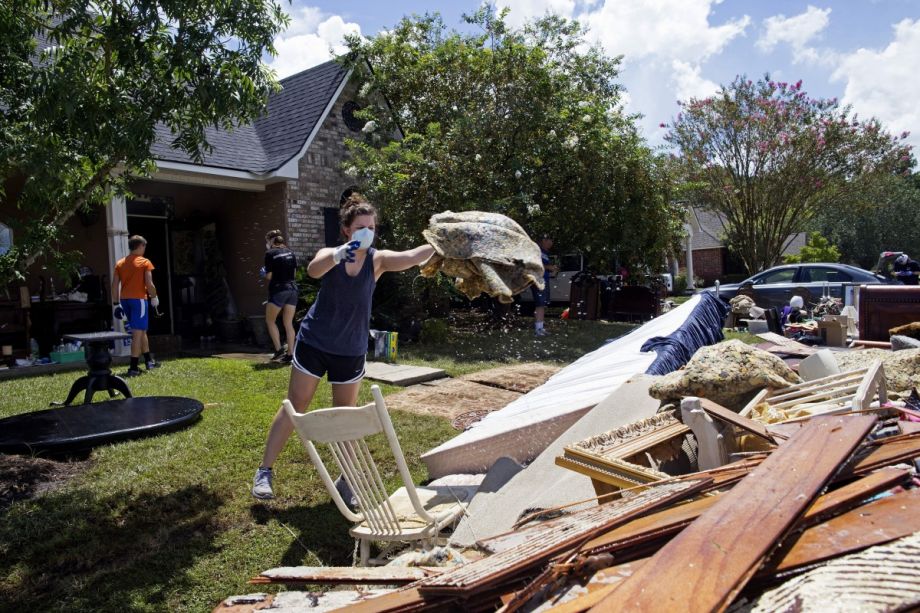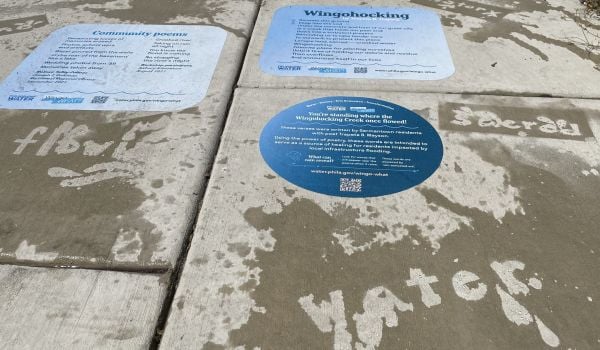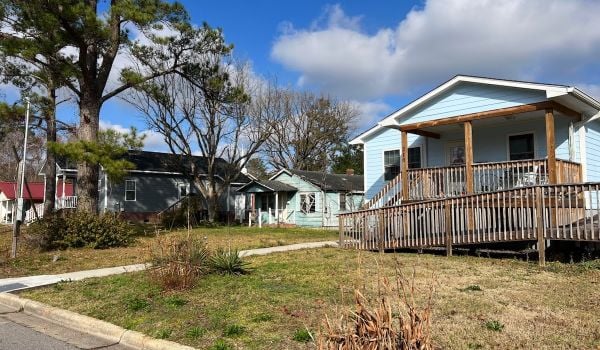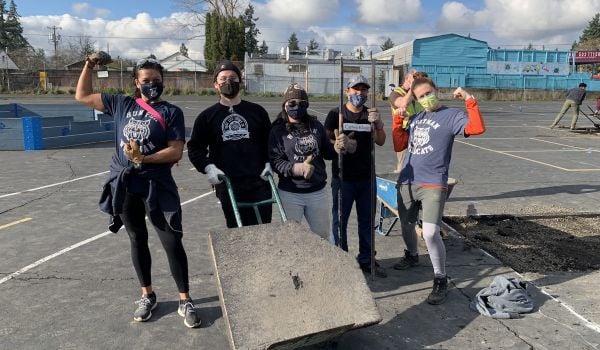Flood waters haven’t completely receded in southern Louisiana, but the owners of over 40,000 flood-damaged homes and businesses in Baton Rouge and East Baton Rouge parishes are already gutting buildings and fighting the mold as best they can. It’s a massive, depressing task, and it’s taking a toll. Over 100,000 people have applied for aid in the form of food stamps and car rentals. Thousands of people have been displaced to shelters, or friend’s couches. And all the while, they’re always in view of the destruction. Streets are lined with piles of debris — washing machines, rolls of carpet, family cars — that municipalities are in the long slog of hauling to the dump.
In Central City, one of three towns in East Baton Rouge Parish, debris removal began August 18 and was expected to launch into full force on Thursday. The municipality contracted with a local company to get started quickly, but as of this week a larger outfit has been hired “to show citizens we were getting the debris up,” says Mayor Junior Shelton. Of the town’s 11,000 residential structures, he estimates 90 percent were damaged; 25,000 of 27,000 residents were affected.
“And when I say affected I don’t mean just a little water in their house. I mean major water anywhere from a foot up to some of them, 8, 9 feet of water,” says Shelton. “Once it gets above over your counters in your home, 3, 4 feet high, you’ve lost everything.”
The homes in Central are down to bare bones now, he says, appliances, furniture, and insulation removed and lining the curb. This was no hurricane, a phenomenon that Central is used to and for which the town might have been prepared. Most hurricane debris — except, like in Katrina, when flooding also occurs — consists of foliage, limbs blown off trees in the wind. This month’s storm was pure rain, over 31 inches in a 42-hour period in East Baton Rouge Parish. (According to some researchers, due to climate change, superstorms that used to impact people once every 100 years may now arrive as quickly as every three to 20 years.)
“When we got to 21 inches in 12 hours we knew we had a problem. No drainage system could handle that amount of water, as evidenced by how widespread this was,” he says. “There were many, many areas not in the flood zone that flooded.”
Not only does that mean many people don’t have flood insurance, but also that the volume of non-foliage debris is much higher than in other emergencies. “Every sort of debris in the world comes out of those houses,” says Greg Langley, press secretary for the Louisiana Department of Environmental Quality. Residents are supposed to sort the refuse into six piles: household trash, vegetative debris, construction and demolition debris, electronics, hazardous household waste, and “white goods.”
That last category encompasses large appliances like refrigerators and air conditioners, washers and water heaters. They’re normally separated out at the facility and scavenged, disassembled for parts and sold. Electronics encompasses everything else with a cord. Homeowners are supposed to separate refuse by type because the different items end up in different sorts of landfills. Household trash goes to a landfill with both a fabric liner and a clay barrier; construction and demolition debris goes to one with just the clay. Because of the volume of debris piling up on Louisiana’s streets, the Department of Environmental Quality signed an ordinance this week allowing rugs and furniture in construction and demolition landfills.
But Langley says compliance is still a challenge. “They don’t always do it no, homeowners don’t do it all the time,” he says of the sorting, which gets into the nitty-gritty. People pile household trash and carpets atop flooded ride-on lawn mowers. But the lawn mowers themselves also need to be disassembled, their fluids drained to be brought to a landfill handling hazardous household waste, their tires removed and shredded.
The DEQ does big education pushes around sorting whenever there’s a disaster. “We’ve tried everything, tried to get people early,” Langley says, but he accepts the challenge is inherent in the devastation. “People don’t tend to think of this when their stuff is floating.”
Chris Calbert, chief administrative officer in the city of Zachary, also in East Baton Rouge Parish, says he’s not seeing a problem with compliance. He’s just trying to get the work done fast. FEMA has a pilot program to take on more of the cost burden of recovery if towns can get their debris cleared in 30 days or less. At the moment, the federal government will cover 75 percent of the cleanup costs, and local governments 25 percent. That ratio could shift to 85/15 or 90/10 depending on the estimated total cost of the damage and the speed with which towns clear the curbs.
In Central, the city has hired a monitor in addition to a debris hauler to make sure the work is being done in compliance with FEMA regulations, so that the town is guaranteed to get its reimbursement. Shelton expects debris removal to take two months, maybe a few weeks longer. East Baton Rouge Parish’s debris removal contractor told The Advocate they expect it will take 90 days to collect the parish’s debris over the course of three sweeps. They estimated 325,000 to 400,000 cubic yards of debris could be on the streets, and that they had picked up 6,000 cubic yards on Monday.
In the meantime, Central is trying to understand FEMA’s other regulations and convey them to residents.
“Number one thing everyone wants to know is, what level do we have to build our houses back up? That’s a very complicated question,” Shelton says. The answer depends upon the extent of the damage, and whether a home was in or outside the flood zone. Zachary is requiring residents to rebuild 1 foot higher than the base flood elevation would suggest. Central is trying to simplify the process where they can. Building permits are now free, and residents can phone them in, though the city does ask that they have an inspector come in to check the work.
That work consists of stripping drywall 4 feet from the floor, cleaning the exposed studs, spraying everything with fungicide, allowing it to dry, and doing it again. The renovation process can be lengthy because residents must take all precautions not to end up surrounded by black mold. Lingering floodwaters have also raised concerns about disease-carrying mosquitos — mostly West Nile, not Zika, here in Louisiana.
Most people will not be able to live in their homes during renovation. When asked where everyone will stay, Shelton says, “Honestly, I don’t have an answer for that yet.” Central and other towns have lifted a ban on motor homes in yards to allow people to stay close to home if they have a trailer, or when FEMA makes trailers available. He may be hoping to clear debris quickly, within three months, but renovations will stretch on a long time. “We’re thinking this will go at least a year if not years,” he says.
Jen Kinney is a freelance writer and documentary photographer. Her work has also appeared in Philadelphia Magazine, High Country News online, and the Anchorage Press. She is currently a student of radio production at the Salt Institute of Documentary Studies. See her work at jakinney.com.
Follow Jen .(JavaScript must be enabled to view this email address)
















